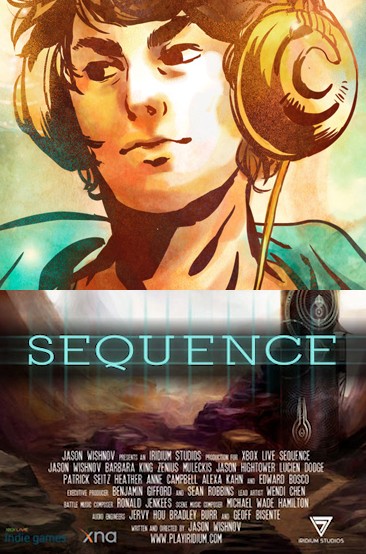Sequence Review
-
Category: ReviewsHits: 11741

Article Index
Page 3 of 3
Presentation and Soundtrack Being a rhythm game, it's understandable that the majority of Sequence's production values went into its soundtrack, and for the most part, it doesn't disappoint. While I can't say I'm familiar with its contributing artists Ronald Jenkees and Michael Wade Hamilton, their electronic-styled music covers a range of tempos, moods and styles and is generally quite catchy and fun to play along to. There's both variety and consistency that comes out of keeping the soundtrack confined to two artists, which I appreciate. Sure, it's no Daft Punk, but in a game focused on music, it's still nice to see that the soundtrack is worth listening to.
If there's one blemish, it's that there simply aren't enough songs to go around. With about 20 songs in total, and some of them devoted to the menu screens, cutscenes, etc., the effective number of tracks in battle is about a dozen. I don't mind repeating the same songs, and the game uses the lure of new songs as a way to help drive progression, but there's no getting around the fact that eventually you'll tire of the same old tracks. This is exacerbated by the grindy nature of the gameplay, which ensures you'll probably hear the same songs three times more often than you'd wish, while others are mysteriously only used a handful of times in boss encounters.
Visually, Sequence uses 2D artwork almost exclusively, adopting a sort of watercolor anime-influenced style, all the work of a single artist, Wendi Chen. I can't say I'm personally in love with the art style itself, but the backdrops are colorful and well-drawn, even if they are largely static. Character art is a little more mixed - the human characters have a ton of personality, but some of the monsters have some pretty strange designs and a few look like they could use a revision. Spell effects are simple but distinctive, and while they aren't flashy, they're easy to read and don't get in the way of gameplay.
The audio department, outside of the music, is a bit more bare-bones, with sparse but distinct sound effects complementing the visuals. The game is fully voice-acted, and while the cast is limited, they do a reasonably competent job giving life and personality to the characters - it's certainly not something I'd expect from a $5 USD indie title, and I think it helps Sequence stand out from the pack, and even some more expensive titles put out by bigger developers, like the aforementioned Puzzle Quest.
Conclusion
What you get with Sequence is effectively a game of two halves. On the one hand, it's got a completely brand-new style of gameplay that combines rhythm games and RPGs in a way that, frankly, is just a lot of fun, especially for shorter sessions. However, its focus on grinding means that gameplay inevitably grows repetitive, and while I'm sure the idea was to help extend play-time in what would have otherwise been a four-hour game, that doesn't make fighting the same monsters over and over any more fun. Combine that with the lack of much to do outside of the battles themselves, and Sequence is never able to quite stand up on its core rhythm-RPG gameplay, as interesting and enjoyable as it is.
Perhaps I've been a little hard on Sequence. Admittedly, I'm critical when it comes to just about any game, and while I tend to give indie titles a free pass when it comes to aspects of presentation and scope, the fact is that Sequence does have some legitimate issues, and I don't think the catchy soundtrack or enjoyable battle system entirely make up for that. In the end, Sequence is a strong first effort for Iridium Studios, and worth its asking price, as long as you're willing to put up with the grinding that comes with it. If you can get past the grinding and the awkwardness of some of the writing, there's a lot to like here. I'm eager to see where the rhythm-RPG gameplay concept will go, as well, and how it can be expanded beyond its current scope.


